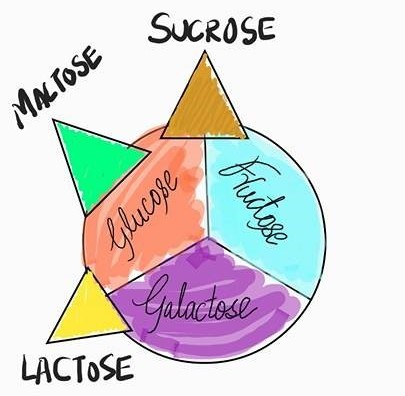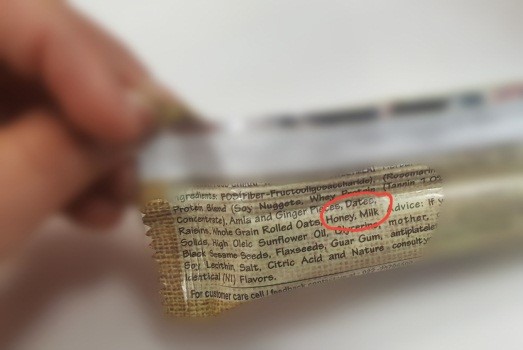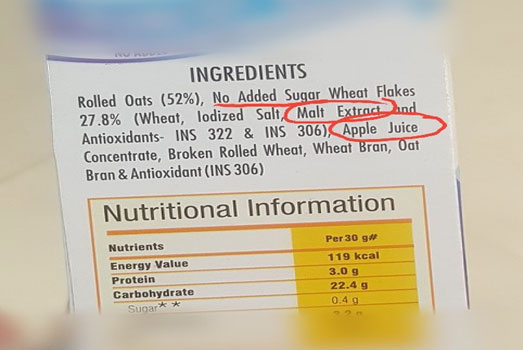.jpg&x=300&y=300&f=0)
Just like any other day, I was travelling in the metro. I started munching these low-calorie sugar-free biscuits that were in my bag. Like most people, I too just started digging into the goodies and did not focus on the wrapper with the tiny scribbling on the back of it. However, this time two words on the packaging caught my attention “maltitol” and “sucralose” .To kill the boredom I decided to search about these two words that did not sound like a simple ingredient.
We all know sugar commonly as these small white crystals that is easily dissolved in liquids. Our first impression of sugar is that there is nothing bad in it; after all we have been consuming it for as long as we can remember. However, much to my surprise this is just like tip of the iceberg or should I say tip of the giant white cube . There’s much more to it than what we know. The manufacturers of “sugar-free” products build up their businesses on the advantage of the incomplete knowledge of people, as they try to fool us by the complicated names for the other sources of sugar substitutes.
 Scientifically, sugars are the carbohydrates - chains made of carbon, hydrogen and oxygen and these chains are either short or long. Short or the simpler chains are the simple sugars that digest fast and spread in blood. Technically, they are termed as monosaccharides (basic units) and disaccharides (couples of monosaccharides shown in figure below). Examples of monosaccharides are glucose, glactose, fructose and disaccharides are sucrose commonly known as sugar, lactose present in milk and maltose present in cereals. The longer and the complex chains of carbohydrates are the polysaccharides. Fibres are also the type of these complex carbohydrates Eg. Starch present in wheat, barley, corn, oats etc, Cellulose present in whole grains, green leafy vegetables etc, Glycogen is in Shellfish, Animal Liver etc. The more complex a carbohydrate is, the more time it takes to digest and convert into its simple form i.e. glucose in the bloodstream.
Scientifically, sugars are the carbohydrates - chains made of carbon, hydrogen and oxygen and these chains are either short or long. Short or the simpler chains are the simple sugars that digest fast and spread in blood. Technically, they are termed as monosaccharides (basic units) and disaccharides (couples of monosaccharides shown in figure below). Examples of monosaccharides are glucose, glactose, fructose and disaccharides are sucrose commonly known as sugar, lactose present in milk and maltose present in cereals. The longer and the complex chains of carbohydrates are the polysaccharides. Fibres are also the type of these complex carbohydrates Eg. Starch present in wheat, barley, corn, oats etc, Cellulose present in whole grains, green leafy vegetables etc, Glycogen is in Shellfish, Animal Liver etc. The more complex a carbohydrate is, the more time it takes to digest and convert into its simple form i.e. glucose in the bloodstream.


After collecting few boxes/wrappers of such sugar-free products and doing a research on ingredients mentioned; I found something very astonishing !
 Firstly, when the manufacturers take out the natural sugars or add manmade sugars in these products. They often add-in fats like palm oil or cream to maintain the taste of the product. Secondly, if the ingredients section of the packed product contains terms like ‘isomalt’, ‘lactitol’, ‘maltitol’, ‘mannitol’, ‘sorbitol’, and ‘xylitol’ then your food product contains sugar alcohols. They have fewer calories than sugar but this does not mean that the products containing these sweeteners are “Free Foods”. Such products still consist of a significant amount of carbohydrates, calories and fat in them. These products may also cause laxative effect or other gastric problems in some people, especially children. Other products may be sweetened with fructose, polydextrose, and maltodextrin, which also contain calories and carbohydrates both. Products like ‘aspartame’ or other non-caloric sweeteners like ‘saccharin’, ‘acesulfame potassium’, or ‘sucralose’ in foods claim to have no carbohydrates in them. These are nothing but artificial or synthetic sweeteners added in the food products claimed as “sugar free foods” but contains carbohydrates in them.
Firstly, when the manufacturers take out the natural sugars or add manmade sugars in these products. They often add-in fats like palm oil or cream to maintain the taste of the product. Secondly, if the ingredients section of the packed product contains terms like ‘isomalt’, ‘lactitol’, ‘maltitol’, ‘mannitol’, ‘sorbitol’, and ‘xylitol’ then your food product contains sugar alcohols. They have fewer calories than sugar but this does not mean that the products containing these sweeteners are “Free Foods”. Such products still consist of a significant amount of carbohydrates, calories and fat in them. These products may also cause laxative effect or other gastric problems in some people, especially children. Other products may be sweetened with fructose, polydextrose, and maltodextrin, which also contain calories and carbohydrates both. Products like ‘aspartame’ or other non-caloric sweeteners like ‘saccharin’, ‘acesulfame potassium’, or ‘sucralose’ in foods claim to have no carbohydrates in them. These are nothing but artificial or synthetic sweeteners added in the food products claimed as “sugar free foods” but contains carbohydrates in them.
“Sugar free” is merely a word and means nothing like what it sounds. Large and successful industries use this widely these days by to mislead and easily approach the consumers. It is very easy to avoid these by questioning ones choice's like, how can a dessert full of fat like gulab jamun and ice cream be a healthy option or what exactly is in my food? The trick is to have both an open eyes and mind by reading those printed letters under ingredients and nutrition table. We need to understand that “Sugar Free does not mean Calorie Free”.
So now the question that comes next is, what do I consume if not table sugar or artificial sweeteners when I want something sweet. Well, there are several other sources of sweeteners which also include natural form of sweeteners such as honey, fruit or fruit juice, maple syrup or milk. However all these types of sugar should be taken in moderation. The bottom line is to keep a check on the natural sugars you eat instead of running behind the artificial sources. Its crucial to cut down on the portion size i.e. the quantity of the snacks and desserts, rather than looking out for shortcuts to fulfil the cravings. People with diabetes and those who are on dieting to lose weight are the most affected victims of these hidden calories intake. So be an empowered customer and understand what exactly you are eating and is that really helping you out? Compare the sugar-free products with added sugar ones, and analyse the difference in calories from both, if any.
Remember” Sugar free is not calorie free” and please read information behind the food products carefully and smartly.
Note: Article has been written by our Diabetes Educator Mrs Mridula Kapil Bhargava who is also an type one diabetic. She helps people suffering from diabetes and related issues. In case you have any queries please get back to us on youngandliving100@gmail.com or visit as at https://www.facebook.com/youngandliving/?ref=bookmarks.
